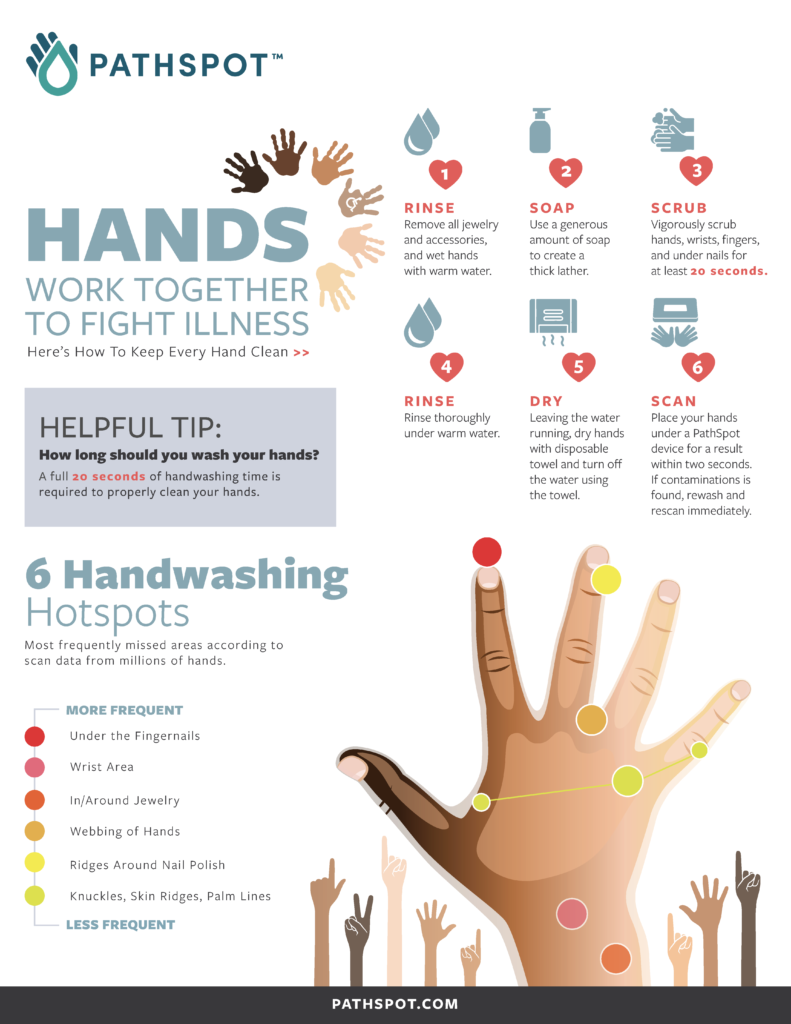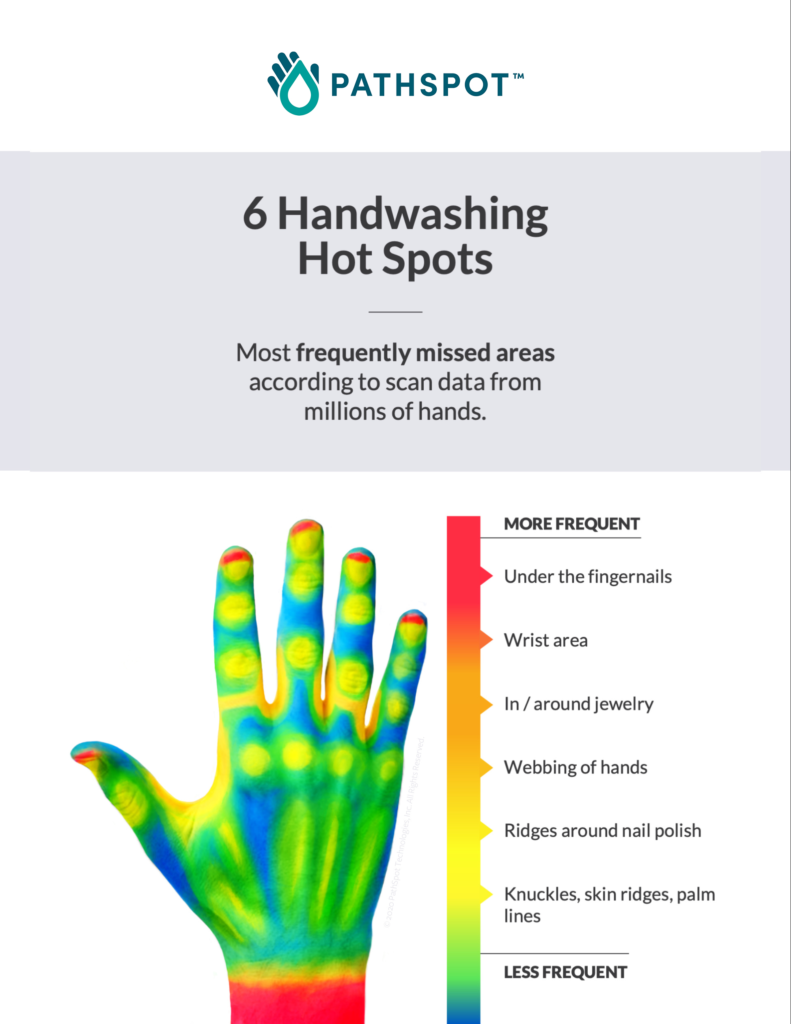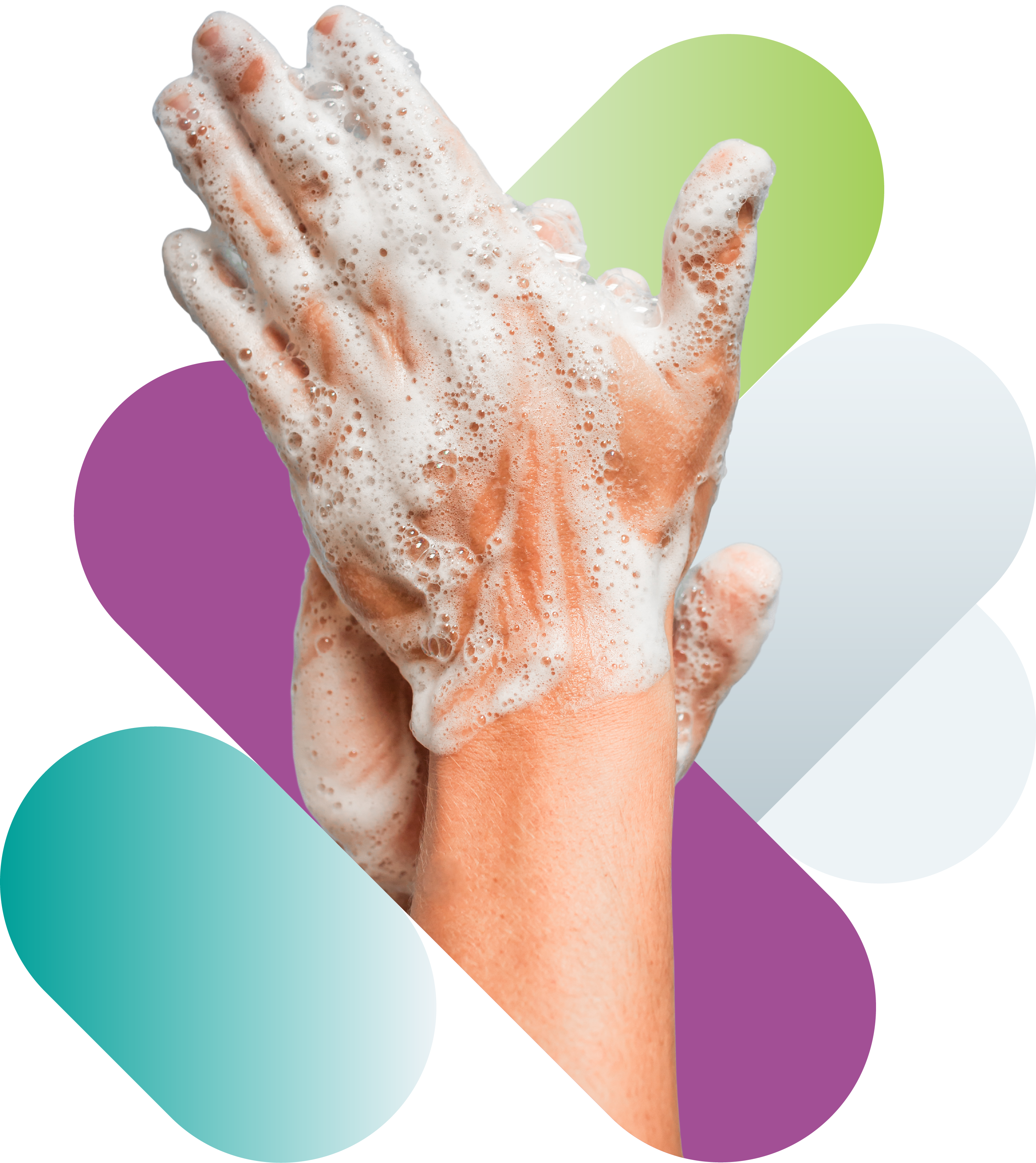HANDWASHING 101: YOUR HANDWASHING GUIDE
Home > Resource Hub > Handwashing Resources > Handwashing 101
What You Need to Know About Handwashing
Handwashing is the easiest, most inexpensive, and most impactful solution to protect against illness outbreaks. The CDC consistently communicates that handwashing is the number one way individuals and employers can protect against the spread of illness. With consumers and employees more focused than ever on hand hygiene practices, it’s vital each of us washes our hands frequently and effectively to keep ourselves and those around us safe.

Hands Work Together to Fight Illness
We created a training sign that helps you signal your workplace is safe and healthy for everyone.

6 Handwashing Hot Spots
We’ve highlighted frequently missed areas according to data from millions of hand scans. Under fingernails, the wrist area, around jewelry, and the webbing of hands are commonly missed areas when washing hands.
Handwashing Steps
Following proper handwashing procedure is vital to ensure each handwash is effective.
-
Rinse: Remove all jewelry and accessories, and wet hands with warm water.
-
Soap: Use a generous amount of soap to create a thick lather.
-
Scrub: Vigorously scrub hands, wrists, fingers, and under nails for at least 20 seconds.
-
Rinse: Rinse thoroughly under warm water.
-
Dry: Leaving the water running, dry hands with disposable towel and turn off the water using the towel.
-
Scan: Place your hands under a PathSpot device for a result within two seconds. If contaminations is found, rewash and rescan immediately.
What About Gloves?
Gloves can become contaminated just as easily as hands. Meaning just because a worker is wearing gloves, their hands aren’t necessarily clean or safe to be working. Workers must wash their hands before putting on gloves otherwise the gloves may become contaminated with pathogens.
Employees should wash their hands before putting on a glove and in between each glove change. Typically, gloves must be changed when switching tasks, if they become damaged, if they become contaminated, and at minimum once every four hours. Glove contamination can occur if a worker touches exposed skin or when switching tasks such as discarding garbage.
The most important thing to remember is that gloves are a great tool, but must be accompanied by frequent and effective handwashing.
How Can Handwashing Be Improved?
Remove Rings & Jewelry
PathSpot commonly detects contamination on or near rings. Recent studies involving healthcare workers also found that ring wearing is associated with an increased risk of hand contamination.
Scrub Between Fingers & Under Fingernails
The CDC recommends scrubbing the underside of fingernails with soap and water (or a nail brush) during every handwash. PathSpot also detects contamination on the webs between fingers, which merit additional focus during handwashing.
Avoid Recontamination
After completing a full, 20-second handwash with warm water and a generous amount of soap, it is important to prevent recontamination before returning to work. Dry hands with single-use paper towels, and turn off the faucet with paper towels to prevent recontamination.
When is Contamination Most Likely?
PathSpot most frequently detects contamination in the early morning and during shift changes— it’s important to ensure team members wash their hands at the start of each shift!
Contamination is regularly detected at a higher rate during the initial period after PathSpot has been installed. Providing real-time feedback on handwashing quality empowers team members with the knowledge to reduce contamination rates in the future.
Another major factor in handwashing effectiveness is manager turnover. When team leaders change, handwashing rates change dramatically.
How Long Should You Wash Your Hands?
A full 20 seconds of handwashing time is required to properly clean your hands.

